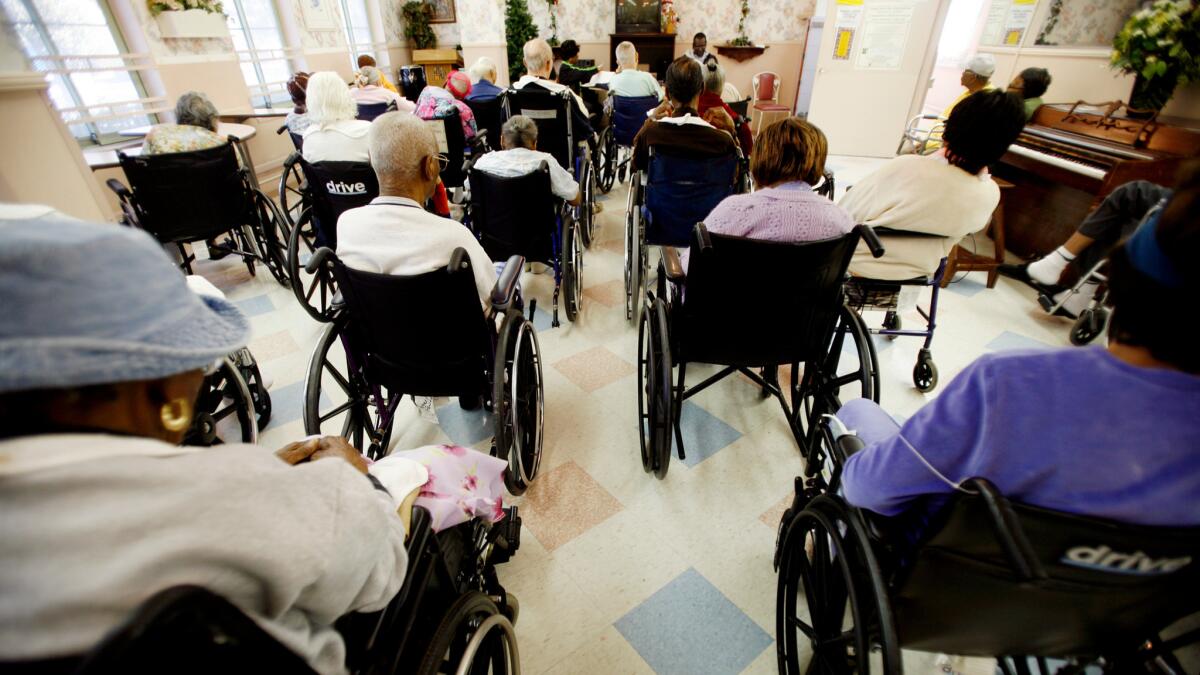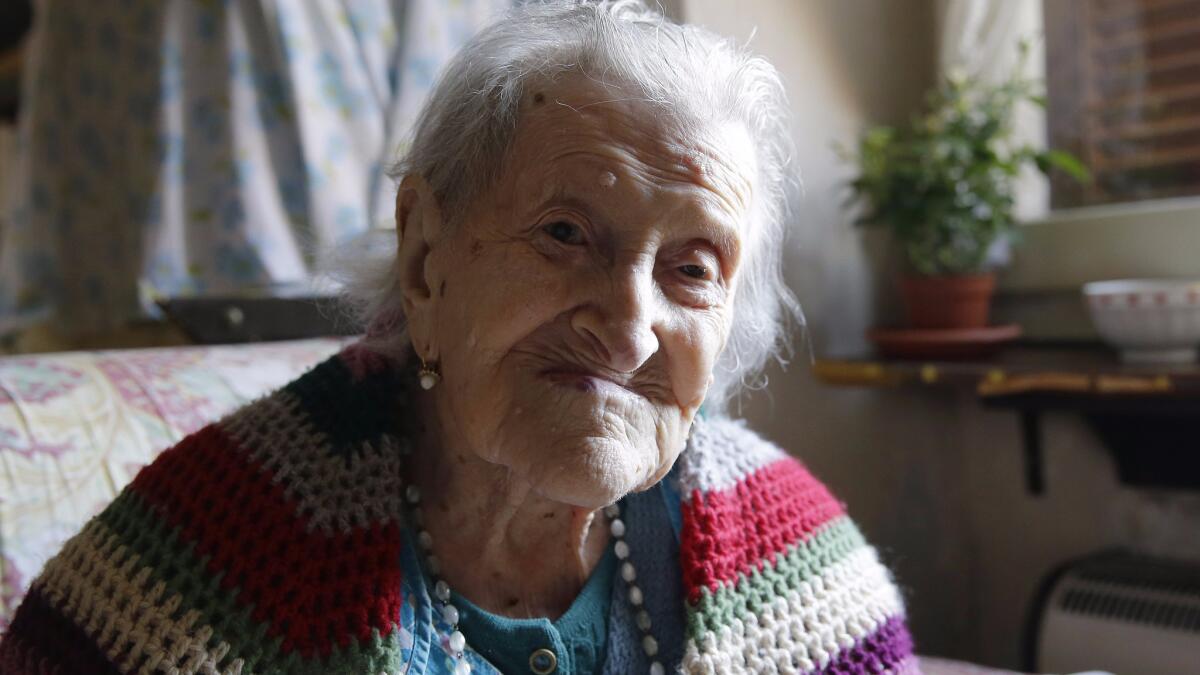When, and why, must we die?

Life-extension zealots have championed many strategies aimed at prolonging our days here on Earth, and not all sound like much fun (I’m thinking specifically about caloric restriction). Super-centenarians — those rare humans who live beyond the age of 110 — by contrast seem to embrace much more appealing life-extension strategies: They routinely endorse regular naps, consumption of large quantities of chocolate, and a daily nip of strong drink, for instance.
In short, when it comes to living longer, mysteries abound. The question is not just how to do it, but whether, even if scientists could distill the fountain of youth, there is a limit to how long humans could be made to live.
A new study offers a tentative answer to the latter question. Writing in the journal Nature on Wednesday, researchers at the Albert Einstein College of Medicine in New York City conducted a complex statistical calculation and concluded that there is such a limit.
Led by geneticist Jan Vijg, the team asserts that humans who have walked among us have hit that limit. And they calculate that if we could cobble together 10,000 people who had reached the age of 110 (a big and theoretical if), the statistical likelihood that just one of them would live beyond 125 in any given year would be 1 in 10,000.
Long odds, those.
In 1997, the longest-lived human ever recorded — a 122-year-old Frenchwoman named Jeanne Calment — died, reportedly with her mental faculties still intact. Attributing her long life to a diet rich in olive oil, port wine and chocolate, Calment was the only person whose age, at death, was verified to have exceeded 120.
Today, at 116, an Italian woman named Emma Morano is the oldest known person alive. At 113 and 111, respectively, Americans Adele Dunlap and Agnes Fenton (both living in New Jersey) are not far behind.

To reach this point, all of those women (and yes, supercentenarians are overwhelmingly women) have made it out of infancy, fought off dangerous infections, survived childbirth and eluded the deadly talons of heart disease, cancer and injury.
But eventually, they will all die of something. Why?
Probably, the authors suggest, because if nothing else gets us, some structural limit of our design simply becomes our undoing.
University of Illinois demographer and aging researcher S. Jay Olshansky explains.
We must die eventually, he suggests, because humans have a body design that evolved to hang in there long enough for us to live long enough to reproduce, ensuring the survival of the species. Once we’ve accomplished that, he suggests, nature has been spectacularly indifferent to parts that wear out, electrical currents that short-circuit, and cells that act on bad information and replicate like crazy.
Our bodies, in short, did not evolve to live into extreme old age.
If living long had been the point of human evolution, said Olshansky, we probably wouldn’t still have “Achilles’ heels” such as neurons and muscle fibers that don’t divide and replicate like other cells of our bodies do. Eventually, when those cells die and aren’t replaced, our brains shrink and our hearts weaken.
People who live long enough for these foibles of the human body to catch up with them aren’t sick when they die, their bodies have just worn out, said Olshansky.
“There isn’t a time bomb that’s ticking,” he said. “But we have a body design that’s fixed. We’re structured like we are because natural selection made us like we are.”
For the same reason, he suggests, there may be a mechanical limit on how fast a human can run. We can train harder, wear better shoes, develop more aerodynamic techniques to make us faster, he says. But eventually, we will likely run up against the mechanical limitations of the human design (which, after all, evolved to balance speed of running against many other priorities that help us survive long enough to reproduce).
There isn’t a time bomb that’s ticking. But we have a body design that’s fixed. We’re structured like we are because natural selection made us like we are.
— S. Jay Olshansky
That sounds right to Steve Horvath, a professor of genetics and biostatistics at UCLA’s Geffen School of Medicine.
In a bid to measure the pace at which individuals and groups of individuals age, Horvath and his colleagues have systematically looked at the activity of the epigenome. That’s the set of chemical signals that prompts our genes, which remain largely fixed and stable from birth until death, to change their function across the lifespan in response to new demands.
By gauging the epigenetic activity of more than 13,000 humans across the spectrum of age and ethnicity, Horvath has observed that our epigenomes switch genes on and off in complex but predictable patterns across our lifespans. If you know what to look for, you can see beyond the hair dye and good grooming and actually tell how old someone is biologically.
Some of us age faster or more slowly than others, says Horvath. (Last week, he published a study in the journal Aging that identified an epigenetic pattern shared by 5% of the population that ages at a distinctly faster-than-usual rate). But these epigenetic regularities confirm that we all age, he says. Query the epigenome and someone closing in on his 90th birthday will always look radically different from a baby.
So it’s not hard to imagine, Horvath says, that after we have aged beyond the point of reproduction, nature has done little to assure the means to go on living indefinitely.
“I agree with the thought expressed by the authors that a natural limit of human lifespan [around 125 years] could be an inadvertent byproduct of a fixed genetic program for development and growth,” Horvath commented.
The good news, Olshansky says, is that “there’s lots we can do” — not only to add years to our lives but to add life to our years.
As a species, of course, we can readily improve life expectancy — just a statistical average, to be sure, but one that could mean longer lives for many. We can prevent disease and improve public health by making clean water, healthier habits and good maternity care more universal. We can continue to treat diseases of aging with better and more widely used therapies for cancer, heart problems, neurodegenerative disease and all the disorders (such as type 2 diabetes and hypertension) that precede them.
But to ensure that more individuals live healthier for longer — and that more of us challenge the seeming limits of human longevity — Olshansky says we’ll have to do more than treat diseases of aging with stents, procedures, pills and the occasional poison.
Instead, he says, scientists should be focusing more on slowing the speed at which we age, by gleaning insights from research such as Horvath’s. Slow the pace of aging and someone blowing out 125 candles on her birthday cake might just be 96 on the inside and keep on living.
“Can we bust through” a natural limit to human life? asks Horvath. “Yes,” he says, “with a new paradigm that focuses on aging and not diseases.”
Follow me on Twitter @LATMelissaHealy and “like” Los Angeles Times Science & Health on Facebook.
MORE SCIENCE NEWS
This is what can happen if an e-cigarette blows up while you’re using it
The Nobel Prize in chemistry goes to 3 for ‘design and synthesis’ of molecular machines
When it comes to views on climate change, liberals and conservatives are still worlds apart




